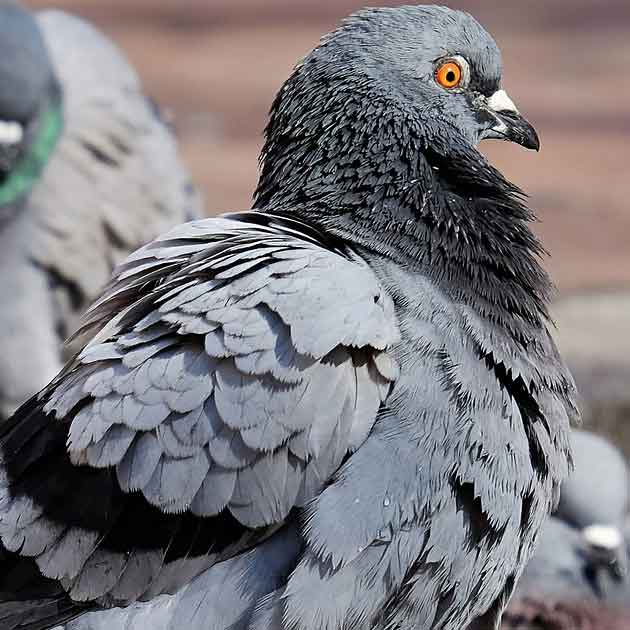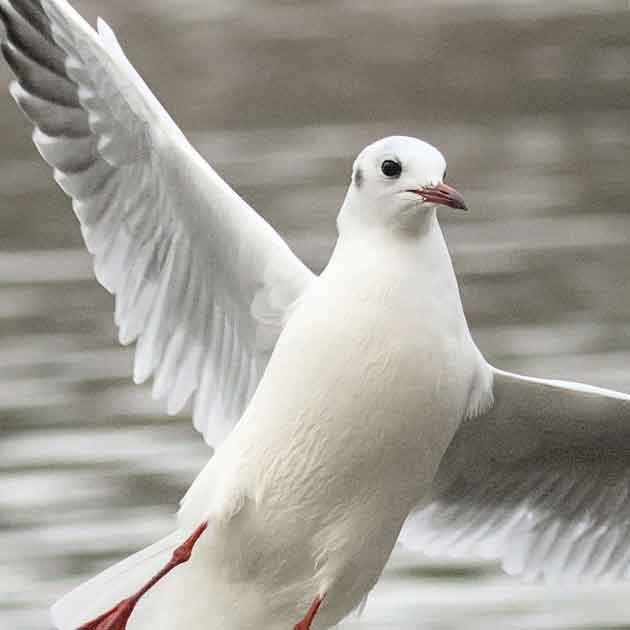
The Canada Goose is very recognizable, black head, white cheek patches and long black neck. There are several different “races” of Canada Geese. The smallest one - the cackling Canada Goose is only about 1.1 kg, while the Giant Canada Goose - the largest, weighs up to 8 kg. Wing span on the smaller birds is just under a metre while the larger birds can be just over 2 metres. The underbelly can range from light grey to chestnut brown, sometimes almost blackish brown.
Canada Geese fly in large V shape flocks of sometimes over a thousand birdes when migrating, and are able to travel more than 1,000 km in one day. They make a very loud honking sound to announce themselves.
Habitat
You can find Canada Geese in nearly any area with water, small ponds, lakes, or rivers. They spend as much time in water as they do on land. Water is their safe zone to flee from fox, coyote, and other predators. You can find geese on beaches, parks or golf courses with ponds, sheltered mountain streams, and rivers. They also like large agricultural fields with crops or leftovers from crops that give them plenty of food. They like to eat young grasses, roots, stems, seeds, and even berries for their young.
Behaviour
Families of Canada Geese will stay together for a full year and migrate south in the winter together and back in the spring. Families tend to nest in the same areas each year, often in the same nest. Canada Geese breed earlier in the year than most other birds because the young are hatched when the plants are at their most nutritious stage of growth. The Canada Goose typically leaves the family to find a mate during its second year. When they find a mate they stay together for life. If one of the pair dies the remaining goose will find a new mate. Females can lay 2 to 10 eggs each season. Typically the younger to goose, the smaller the brood. They tend to be very territorial during nesting season, not letting any other geese or predators get near the nest. The dad protects the nest fiercely and aggressively against any predators and can be swift to attack if he thinks the nest may be in danger. He will honk loudly, hiss, flap his wings and rush toward the perceived danger. People have been injured many times in a goose attack. The female incubates the eggs for 25 to 28 days. The male protects his mate and the nest. The female will only leave the nest to eat, drink and bathe. Once the goslings are old enough the family leaves the nest as a unit to forage in meadows and along shorelines.
All birds moult each year to replace damaged or lost feathers. Waterfowl are unusual in that they replace all of the flight feathers at once. So, they are flightless until their new feathers grow in. Adult Canada Geese undergo this moult in June and early July. This moulting period coincides with the end of the season that geese are raising their babies. Geese are excellent parents in caring for and defending their goslings, who also cannot yet fly. It’s a good time to get the moulting done. Once the adult has grown its new feathers the gosling are ready to fly.
Conservation
There are several predators that prey on the eggs and the young of geese. Fox, wolves, coyotes, bald eagles can kill an adult Canada Goose, but it takes skill on the part of the predators. Once an adult goose has reached its second year it is experienced enough to put up a good fight and often win that struggle. Gulls, raven, even bears and racoons (and other predators) like to eat the eggs.
In our world there are many species of wildlife that are at risk. The Canada Goose used to be at risk but due to conservation efforts it has made a roaring comeback. By the year 1900 the Giant Canada Goose was almost extinct. Early settlers liked the eggs and it was very easy to herd the geese for slaughter during the moulting period.
With government management programs and hunting regulations the population of geese is at an all time high, to the point that Canada Geese have become a nuisance in some areas.
Problems and the nuisance factor associated to geese include collisions with aircraft, aggressive behaviour towards people and their overabundance of droppings on lawns and beaches , which can contaminate drinking water as their droppings carry bacteria and parasites.
To deal with nuisance geese the Canadian Wildlife Service has opened up the hunting regulations and allowed more management options under permit.
For all your nuisance geese problems, contact HAWKEYE Bird and Animal Control. We are the experts at dealing with all bird and wildlife problems. We have a great, long standing working relationship with Canada Wildlife Services and have sound knowledge of requirements for permits related to geese and other protected wildlife.
Related articles: What's so special about Canada Geese? | https://www.hawkeye.ca/blog/how-the-rise-in-goslings-increases-goose-infestations-across-vaughan














